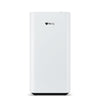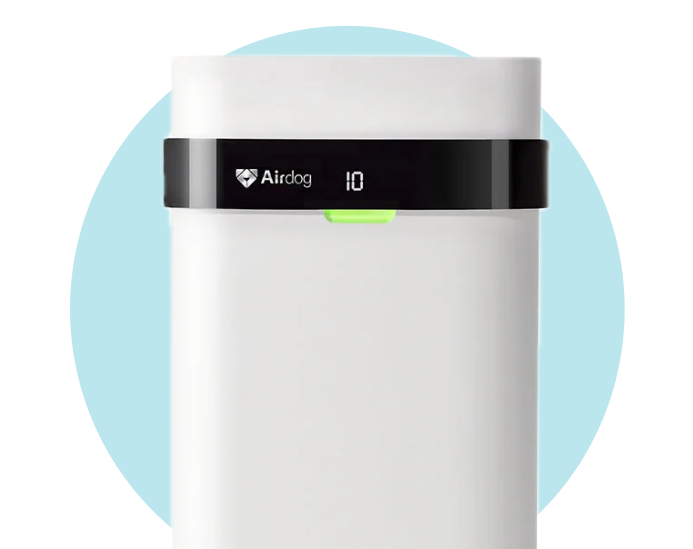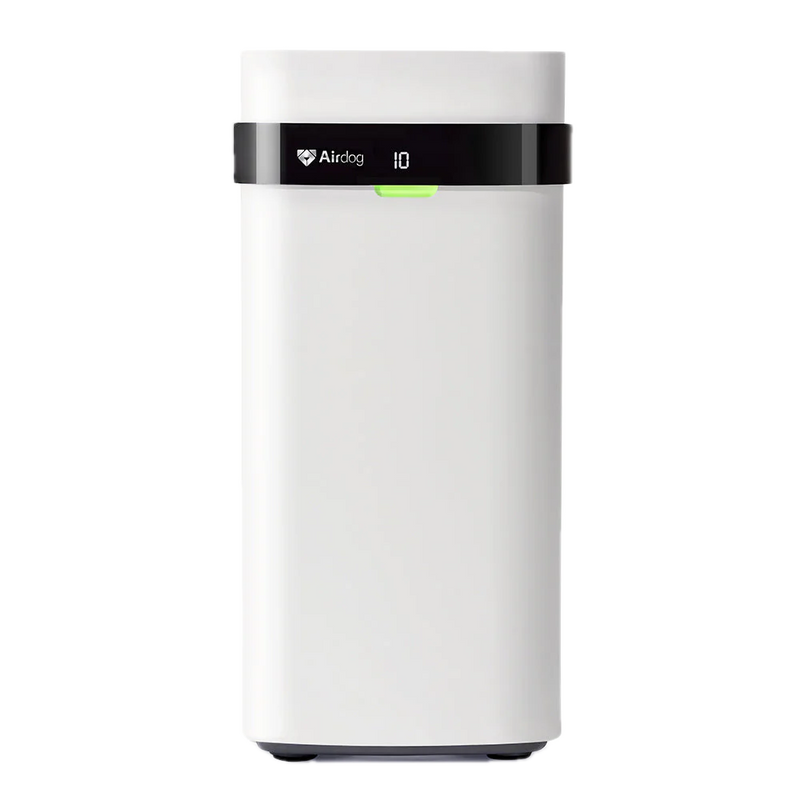This is a Common Question for Clean Homes
Dust is an inevitable part of indoor living, made up of tiny particles like skin cells, pet dander, and outdoor pollutants. It accumulates on furniture, floors, and surfaces, causing a need for constant cleaning. More importantly, it can negatively affect indoor air quality and trigger respiratory issues. Many people ask, “Will an air purifier help with dust?” The answer is yes, but how effective are air purifiers at managing dust, and what other steps can you take to ensure a dust-free home? This comprehensive guide explores how air purifiers can significantly reduce dust and improve air quality, supported by additional cleaning strategies to optimize your living space.

What Is Dust Made Of, and Why Is It Harmful?
Understanding what dust is helps explain why managing it is crucial for your home and health.
The Composition of Dust
Household dust is a mixture of organic and inorganic particles, including:
- Dead Skin Cells: Shed naturally by humans and pets.
- Dust Mites and Their Allergens: Microscopic pests that thrive in warm, humid environments. Their feces and body fragments are common triggers for allergies.
- Pet Dander: Tiny flecks of skin from pets can cause allergic reactions.
- Mold Spores and Pollen: Airborne particles that settle indoors, contributing to poor indoor air quality.
- Outdoor Air Pollutants: Tiny particles like soot, dirt, or industrial chemicals that enter your home through windows and doors.
Health Risks of Dust
The Environmental Protection Agency (EPA) warns that exposure to dust and related allergens can lead to:- Dust Allergies: Symptoms like sneezing, itchy eyes, and a runny nose are often caused by dust mite allergens.
- Respiratory Issues: Fine dust particles and pet dander can worsen asthma and other respiratory diseases.
- Poor Indoor Air Quality: Accumulated dust reduces air quality, leading to discomfort and potential long-term health risks.
How Do Air Purifiers Work?
Air purifiers improve air quality by removing airborne particles, including dust, from your living space.
Key Components of an Air Purifier
- Pre-Filters: Capture larger particles such as pet hair and visible dust.
- HEPA Filters: High-Efficiency Particulate Air filters trap 99.97% of particles as small as 0.3 microns, such as dust mites, mold spores, and fine dust.
- Activated Carbon Filters: Absorb odors and volatile organic compounds (VOCs) that may be present in dust.
Advanced technologies, like Airdog’s patented TPA® Technology, go beyond traditional methods by capturing dust particles and eliminating allergens and bacteria entirely.
The Role of Air Purifiers in Dust Control
How Air Purifiers Help with Dust
Air purifiers pull air into the unit, filter out particles like dust, and release clean air into the room. They are especially effective at:
- Trapping Dust Particles: Pre-filters and HEPA filters catch large and tiny particles, including those that would otherwise settle on surfaces.
- Reducing Dust Mite Allergens: HEPA filters and advanced systems capture dust mites and their allergens, relieving those with dust mite allergies.
- Improving Air Quality: Air purifiers improve overall air quality by removing airborne particles, making your home healthier and more comfortable.
Addressing Dust Mites
Dust mites are a significant contributor to indoor allergens. An air purifier with a high-quality HEPA filter can capture dust mite allergens, including their feces and body fragments, preventing allergic reactions and respiratory issues.
Limitations of Air Purifiers
While air purifiers significantly reduce airborne particles, they can’t eliminate dust. Dust that has already settled on surfaces requires regular cleaning to be removed.
Benefits of Using Air Purifiers for Dust
1. Reduced Dust AccumulationAir purifiers prevent dust from settling by capturing particles before they land on surfaces, reducing the frequency of dusting and vacuuming.
2. Relief from Allergies
Air purifiers help alleviate symptoms such as sneezing, itchy eyes, and runny nose by removing allergens like dust mites, pet dander, and mold spores.
3. Cleaner Indoor Air
Filtering out dust particles improves indoor air quality, making your living space healthier for everyone, especially those with respiratory issues or seasonal allergies.
Cleaner air can improve sleep by reducing nighttime allergies and irritation caused by airborne particles.

Choosing the Right Air Purifier for Dust
Not all air purifiers are equally effective at removing dust. To achieve the best results, consider the following factors:
HEPA FiltersOpt for an air purifier with a HEPA filter to trap the smallest dust particles and allergens, including dust mites.
Clean Air Delivery Rate (CADR)This rating indicates how quickly an air purifier can clean the air in a room. Choose a purifier with a high CADR to ensure faster and more efficient dust removal.
Room Size CoverageSelect an air purifier designed for the size of your room. Larger spaces require purifiers with greater airflow capacity.
Advanced TechnologyAirdog’s TPA® Technology is an excellent choice for comprehensive dust control, as it eliminates particles rather than merely trapping them.
Enhancing Air Purification: Tips for Reducing Dust
While air purifiers are powerful tools, combining them with these strategies ensures optimal dust control:
1. Vacuum RegularlyUse a vacuum cleaner equipped with a HEPA filter to trap dust particles from carpets, rugs, and upholstery.
2. Damp DustingClean surfaces with a damp or microfiber cloth to prevent dust from becoming airborne.
3. Wash Bedding WeeklyHot water kills dust mites in bedding, reducing allergens in your home.
4. Use Dust-Proof CoversProtect mattresses and pillows with tightly woven, dust-proof covers to prevent dust mite infestations.
5. Control Humidity LevelsMaintain indoor humidity between 30–50% using a dehumidifier or air conditioner to deter dust mites.
6. Declutter Your SpaceMinimize items like books and decorative pieces that collect dust, and choose smooth surfaces for easier cleaning.
Why Airdog Air Purifiers Are Ideal for Dust Control
Airdog air purifiers are a top choice for eliminating dust and improving air quality.
Key Features:
- TPA® Technology: Goes beyond traditional filters by destroying dust particles, bacteria, and allergens.
- Eco-Friendly Design: Washable filters reduce waste and maintenance costs.
- High CADR: Quickly purifies air in both small and large rooms.
- Quiet Operation: Maintains a peaceful environment while working efficiently.
Whether tackling dust allergies or aiming for a cleaner home, Airdog air purifiers provide effective and lasting solutions.
Setting Realistic Expectations
While air purifiers significantly reduce airborne dust, they work best with regular cleaning and other preventive measures.
- Immediate Results: Cleaner air and reduced allergy symptoms within hours.
- Long-Term Benefits: Consistent dust control and improved indoor air quality.
- Enhanced Comfort: Reduced dust accumulation on surfaces and in the air.
A Breath of Fresh Air
If you’re wondering, “Will an air purifier help with dust?” the answer is clear. Air purifiers effectively reduce airborne dust particles, improve air quality, and alleviate allergy symptoms. Combining an air purifier with proper cleaning ensures a healthier, more comfortable living space.
Ready to enjoy cleaner air and reduced dust in your home? Discover Airdog’s innovative air purifiers today. Breathe better, live better.





